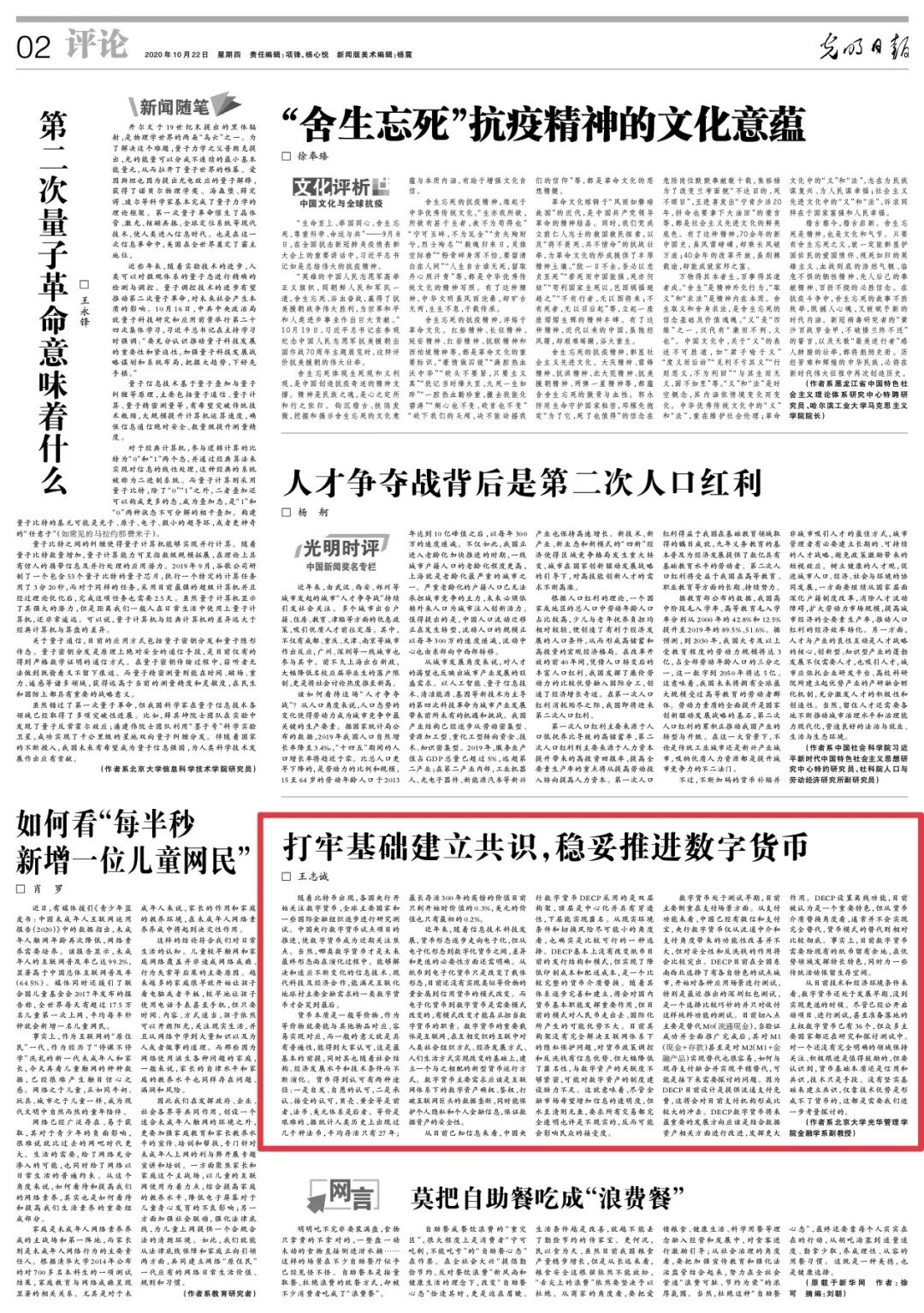SECTIONS Guanghua Insights
(The following is based on a Chinese-language article penned by Wang Zhicheng,associate professor of finance with Peking University’s Guanghua School of Management,for the Guangming Daily.)
Following the Bitcoin frenzy,many central banks and international financial institutions have began research and development of their own digital currencies,including the People's Bank of China(PBOC). It remains to be seen which type of digital currency will be the winner that is most adept at meeting financial demand in this modern world of hyper-connectivity and rapidly-evolving information technology.
Currency is,in essence,a universally recognized equivalent that is the measure by which commodities are compared and exchanged,and it evolves in step with social structures,economic development and technology conditions. There are two ways that a currency can obtain recognition: one is voluntary(such as shell and gold),and another is by acceptance(such as legal tender and the U.S. dollar system). It is difficult for a currency to achieve and maintain an equivalent status as data show that thousands of currencies that have emerged through human history only existed for an average of 27 years each. Pound sterling,the oldest existing one,has only 0.3 percent of its initial value,the U.S. dollar left with only 0.2 percent.

As information technology pushes currencies towards an electronic form,the question remains as to what is the difference with the electronic form and digital currency,and whether it is necessary to switch to digitization. The transition from paper to the electronic form is only a matter of vehicle,and one has yet to witness a change of equivalent model that converts precious metals to credit currency. A change of model is also necessary for the transition from electronic to digital that empowers a digital currency with key functions. The Internet,a crucial vehicle for digital currency,is where a new type of currency can be operated to cope with changing social organization methods,economic development patterns and people’s life styles amid hyper-connectivity. Important functions of a digital currency include authenticating the rights of digital assets within the Internet system,breaking the monopoly of Internet giants while protecting individual privacy,personal financial data and the security of digital assets.
The PBOC’s digital currency follows a two-tiered structure in which the currency is issued by the central bank to commercial banks which,in turn,release it to the public. Such a structure maintains a centralized system while ensuring anonymity at lower levels,a plausible one that caters to the reality and minimizes risks. Without changing the structure and model of issuing paper money,the digital currency manages to lower the cost of printing and transferring. As the country’s digital currency system improves,it will play a key role in fulfilling basic monetary functions within its border,but the current model will not give China’s digital currency many advantages in its global development. While useful for monetary policy adjustment and anti-money laundering,albeit at the cost of reduced anonymity,the existing structure has yet to solve privacy protection issues,and its support for digital assets is still weak. Despite the hope of the financial market to boost information transparency,it might prove unrealistic to make all trades one hundred percent transparent and also risk stemming public enthusiasm.

China’s digital currency is still in the pilot phase and mainly used in payment. In terms of payment,its improvements upon the functions provided by WeChat and Alipay are limited,but its benefits to security and anti-money laundering will be considerable. Run in select cities across the country and applied to various scenarios,the program includes a wallet function in southern city Shenzhen that specifically aims at payment and transfer. The current test focuses on M0(money in circulation),and will,if successful,expand to M1(cash and deposit)and even M2(M1 and financial products). The next question will be how to integrate the digital currency with the current payment system and replace it steadily and smoothly. Due to its current policy of no additional fees for circulation and payment,it might cause some pressure on existing payment methods. The country’s digital currency has huge potential if data assets are incorporated into itsfuture development. While its offline function is seen as a key feature,chances are the digital currency will not completely replace the traditional medium. In fact,it needs to leave some living space for paper money.
In terms of technology and economic environment,digital currency is still in its infancy,and a complete transition has yet to come. Although 36 sovereign digital currencies are about to land,countries across the world are still researching and testing. While an unknown field merits enduring attention,it should be noted that the essence of a currency is credit and consensus,and technology is only a means to an end. Without a solid foundation to build consensus,technology alone is not enough to make a currency possible. These are issues that beg further discussion.
*International Media Relations Contact: media@gsm.pku.edu.cn
 Programs
Programs